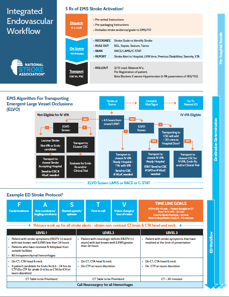Pulsara Around the World - 2025 Recap and January 2026
December Recap After an incredibly busy events year with 102 conferences, trade shows, and sponsorships, December was on the slower side for us, with...
2 min read
 Rob Dickson, MD
:
May 07, 2018
Rob Dickson, MD
:
May 07, 2018

EDITOR'S NOTE: Special thanks to our guest blogger, Dr. Rob Dickson. Dr. Dickson is an emergency physician and EMS medical director of the Montgomery County Hospital District in Southeast Texas. He has a keen interest in stroke systems of care with an emphasis on uniting EMS with the emergency department and neurovascular specialists to improve systems of care in stroke. He is an assistant professor of emergency medicine with the Baylor College of Medicine in Houston and author of numerous articles on systems of care in stoke and efficacy of the Pulsara platform in both STEMI and Stroke.
--
Large vessel occlusion (LVO) stroke is a particularly disabling type of stroke where clots are blocking blood flow in the large vessels that supply the brain. The optimal therapy for this type of stroke is to re-establish blood flow as quickly as possible using clot-busting medication and remove the clot with a mechanical device. Data shows that for every 15- minute delay in re-perfusion, stroke patients are more likely to have a poor functional outcome.
In late 2015, several ground-breaking clinical trials demonstrated improved outcomes for patients treated with endovascular therapy (EVT). Hospitals have evolved rapidly with many systems trying to implement EVT programs. As the systems of stroke care rapidly evolve in this new era of revolutionary stroke care, EMS systems must have a paradigm shift in the way we approach the evaluation of stroke.
Endovascular clot removal can only be done in specialized comprehensive or endovascular capable specialty hospitals. For EMS, this prompted a change in the way we approach and evaluate stroke in the field. The time-sensitive nature of EVT dictated that EMS adopt and validate new pre-hospital stroke screens to identify patients with suspected LVO that may benefit from EVT and triage them to the proper hospital.
In 2016, the Montgomery County Hospital District EMS (MCHD) clinical department began a system-wide quality improvement initiative to improve diagnosis and disposition decisions for stroke -- and in particular, large vessel occlusion stroke. At MCHD, the clinical team -- led by Chief Jordan Anderson, Quality Lead Kevin Crocker, Cardiovascular Specialist, Brad Ward, and Stroke Specialists Coty Aiken and Andy Adams -- developed educational resources along with diagnostic and transport algorithms. Additionally, our Education Coordinator, Lee Gillum, oversaw all of our education with our crews.
 The EMS diagnostic algorithm was recently adopted into the National Stroke Association as part of a national guideline for endovascular therapy (EVT) in LVO stroke. The 5R’s algorithm developed at MCHD is a novel approach that addresses the complexities encountered by EMS systems in sorting out stroke patients. It’s easy to use and can be applied by hospitals and clinics, as well as other EMS systems to train their clinicians in time-critical tasks that must be done when encountering a suspected LVO stroke patient.
The EMS diagnostic algorithm was recently adopted into the National Stroke Association as part of a national guideline for endovascular therapy (EVT) in LVO stroke. The 5R’s algorithm developed at MCHD is a novel approach that addresses the complexities encountered by EMS systems in sorting out stroke patients. It’s easy to use and can be applied by hospitals and clinics, as well as other EMS systems to train their clinicians in time-critical tasks that must be done when encountering a suspected LVO stroke patient.
MCHD is partnered with local hospitals and regional stroke leadership to develop a regional approach to education and training for EMS and hospital clinicians on LVO stroke. The clinical team at MCHD is leading the way in our region and nationally with their contributions to improving stroke care.

December Recap After an incredibly busy events year with 102 conferences, trade shows, and sponsorships, December was on the slower side for us, with...

Editor's Note: In July 2025, EMS1 and Fitch & Associates released their annual EMS trend survey, What Paramedics Want, proudly sponsored by Pulsara....
![[PRESS RELEASE] Published Research Finds Up to 31% Faster STEMI Treatment Times in Rural Hospital Setting with Pulsara](https://www.pulsara.com/hubfs/_1_website-page-blog-assets/pulsara-hosp-teams-assign-cardio-stemi-rn-1200x701.jpg)
Published research shows how using Pulsara, alongside standardized field activation and a focus on stakeholder relationships, improves STEMI care and...